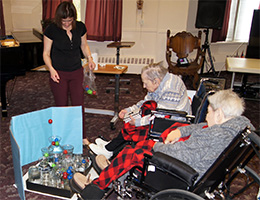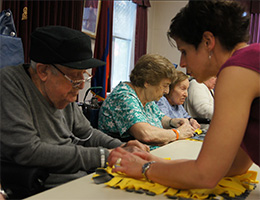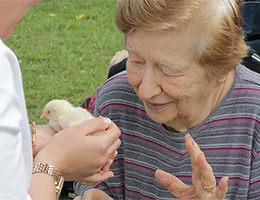The Armenian Nursing & Rehabilitation Center
Outbreak Plan
The facility’s Outbreak Plan is a protocol for identifying, isolating, and cohorting infected and at-risk staff and residents in the event of a contagious disease until cessation of the outbreak. It is in accordance with the current guidelines from the Centers for Medicare and Medicaid (CMS), Centers for Disease Control (CDC), and state and local departments of health for the duration of the COVID-19 pandemic and is based on the requirements in ED 20-026, the Directive for the Resumption of Service in Long Term Care Facilities.
1. The facility is presently in Phase 0 and attests to meeting the criteria below prior to advancing from Phase 0 to any new “Phase” in their reopening process.
2. i. Lessons learned from the response to and experience with Covid-19.
The purpose of the “Outbreak Plan” is to provide guidance for The Armenian Nursing & Rehabilitation Center in how to prepare for a new infectious disease “outbreak” whose incidence in humans has the potential to pose a significant public health threat and danger of infection to the facility’s residents, families, visitors and staff.
Definitions:
Outbreak – A disease outbreak is the occurrence of a disease in greater numbers than expected in a skilled nursing facility during a season.
Pandemic – A sudden infectious disease outbreak that becomes very widespread and affects a whole region, continent, or the world due to a susceptible population and causes a high degree of mortality. Isolation-Separation of an individual or group who is reasonably suspected to be infected with a communicable disease from those who are not infected, to prevent the spread of the disease.
Quarantine – Separation of an individual or group reasonably suspected to have been exposed to a communicable disease but who is not yet ill (displaying signs and symptoms) from those who have not been so exposed to prevent the spread of the disease.
The facility’s strategy is to routinely monitor residents and staff to quickly identify signs of a communicable disease that could develop into an outbreak. Such signs will be effectively and clearly communicated to staff, patients/residents, their families, or guardians by implementing, without including personally, identifiable information, actions including but not limited to:
1. Infection surveillance
2. Education & training
3. Precautions
4. Infection prevention
5. Control measures
6. Testing
7. Staffing
8. PPE’s
9. Infection Control Preventionist
10. Reporting
11. Respiratory Protection Program
12. Attestation
3.i. To prevent or reduce the risk of transmission, including if normal operations of the facility will be altered, and to provide cumulative updates for residents, their representatives, and families of those residing in the facility at least once weekly, especially during a curtailed visitation period, the facility will implement the following:
ii. The facility will establish written standards, policies, and procedures that provide for virtual communication with residents, families, and resident representatives, in the event of visitation restrictions due to an outbreak of infectious disease or in the event of an emergency.
iii. The facility will provide a documented strategy for securing more staff in the event of a new outbreak of COVID-19 or any other infectious disease or emergency among staff.
4. The facility will post the outbreak plan on the facility’s website for public view no later than two (2) months from the enactment date of this Directive.
5. The facility has a documented communication plan to inform residents, their representatives, and the families of the residents by 5 p.m. the next calendar day following the subsequent occurrence of either: each time a single confirmed infection of COVID-19 is identified, or more residents or staff with new-onset of respiratory symptoms occur within 72 hours of each other.
6. The facility prominently displays on its website and/or social media platforms and includes in communications to families, guardians and the public, a phone number or method of communication for urgent calls or complaints.
7. i. When in-person visits are not permitted, the facility offers virtual means of communication such as cell phone, wireless landline, iPad, and an audio EverSound system.
iv. Families can call into the Care Plan Meetings every Wednesday at 11:30 a.m. and the Interdisciplinary Team will share the status of activities or happenings in the facility and family members can ask questions or make suggestions.
v. The facility’s website will be updated weekly with information that helps families know what is happening in the loved one’s environment, such as food menus and any scheduled activities.8. The facility is not experiencing a staffing shortage nor currently operating under a contingency or crisis staffing plan.
8. The facility is not experiencing a staffing shortage nor currently operating under a contingency or crisis staffing plan.
9. Testing has been initiated within 2 weeks from the effective date of this Directive by establishing an agreement with a laboratory. Residents and staff are tested weekly and is meeting test, data reporting requirements as outlined in NJDOH E.D. 20-026.
10. No later than nine (9) months from the date of enactment of this Directive or May 10, 2021, the facility will develop and implement a Respiratory Protection Program (RPP) that complies with the Occupational Safety and Health Administration (OSHA) respiratory protection standards for employees.
11. The facility has an adequate emergency stockpile or 2 months of PPE, essential cleaning and disinfection supplies so that staff, residents, and visitors can adhere to recommended infection prevention and control practices.
12. The facility is using the CDC’s PPE Burn Rate Calculator to estimate the supply of PPEs needed for their required levels under E.D. 20-026.
13. The facility will continue to follow current NJDOH directives regarding admissions and re-admissions. The facility will consider for admission a resident who was tested prior to admission.
14. The facility is actively screening all persons entering the building (except EMS personnel) for signs and symptoms of COVID-19 including temperature checks, and completion of a questionnaire about symptoms and potential exposure.
15. The facility will continue to follow current NJDOH directives regarding admissions and re-admissions. The facility will consider for admission a resident who was tested prior to admission.
16. The facility has established a designated, outside visitation area where no more than 2 visitors are permitted, by appointment only, to visit the resident.
17. The facility allows indoor visits for End-Of-Life, Compassionate Care, and Essential Caregiver conditions for all residents except for those that are in a 14-day quarantine period or are COVID-19 positive and have not yet met the criteria for the discontinuation of isolation or are symptomatic.







